Free Flow and Discharge Characteristics of Trapezoidal-Shaped Weirs
Abstract
1. Introduction
2. Method
3. Data Analysis and Results
3.1. Free-Surface Profiles
3.2. Variation of Bed Pressure
3.2.1. Minimum Bed Pressure
3.2.2. Dynamic Bed Pressure
4. Free-Flow Coefficient of Discharge
Effect of Weir Face Slopes
5. Conclusions
Funding
Conflicts of Interest
Nomenclature
| width of the flow control section [L] | |
| discharge coefficient [-] | |
| observed discharge coefficient [-] | |
| computed discharge coefficient [-] | |
| approach Froude number [-] | |
| gravitational acceleration [LT−2] | |
| approach overflow depth [L] | |
| brink depth [L] | |
| approach velocity head [L] | |
| flow depth [L] | |
| upstream crest-referenced energy head [L] | |
| weir crest length [L] | |
| bed pressure [ML−1T−2] | |
| dynamic bed pressure [ML−1T−2] | |
| hydrostatic bed pressure [ML−1T−2] | |
| minimum bed pressure [ML−1T−2] | |
| discharge [L3T−1] | |
| coefficient of determination [-] | |
| height of the weir crest [L] | |
| horizontal coordinate [L] | |
| transverse coordinate [L] | |
| vertical coordinate [L] | |
| normalized bed pressure [-] | |
| unit weight of the fluid [ML−2T−2] | |
| [-] | |
| relative overflow head [-] | |
| free-surface elevation [L] | |
| free-surface elevation at the gaging station [L] | |
| slope of the free surface [-] | |
| slope of the upstream weir face [deg] | |
| curvature of the free surface [L−1] | |
| relative free-surface curvature [-] | |
| slope of the downstream weir face [deg] | |
| or | non-dimensional horizontal distance [-] |
| normalized dynamic bed pressure [-] | |
| normalized free-surface elevation [-] | |
| [-] |
References
- Bos, M.G. Discharge Measurement Structures, 3rd ed.; International Institute for Land Reclamation and Improvement: Wageningen, The Netherlands, 1989; pp. 28–121. [Google Scholar]
- Zerihun, Y.T. A One-Dimensional Boussinesq-Type Momentum Model for Steady Rapidly-Varied Open-Channel Flows. Ph.D. Thesis, The University of Melbourne, Melbourne, Australia, 2004. [Google Scholar]
- Zerihun, Y.T.; Fenton, J.D. A Boussinesq-type model for flow over trapezoidal profile weirs. J. Hydr. Res. 2007, 45, 519–528. [Google Scholar] [CrossRef]
- Bazin, H. Expériences Nouvelles sur L’écoulement en Déversoir (Recent Experiments on the Flow of Water over Weirs); Dunod: Paris, France, 1898. (In French) [Google Scholar]
- Sigurdsson, G. Discharge Characteristics of an Embankment-Shaped Weir. Master’s Thesis, Georgia Institute of Technology, Atlanta, GA, USA, 1955. [Google Scholar]
- Kindsvater, C.E. Discharge Characteristics of Embankment-Shaped Weirs; Geological Survey Water-Supply Paper 1617-A; U.S. Government Printing Office: Washington, DC, USA, 1964.
- Skogerboe, G.V.; Hyatt, M.L.; Austin, H.L. Stage-Fall-Discharge Relations for Flood Flows over Highway Embankments; Report PR-WR6-7; Utah Water Research Laboratory, College of Engineering, Utah State University: Logan, UT, USA, 1966. [Google Scholar]
- Hager, W.H. Breitkroniger überfall (Broad-crested weir). Wasser-Energie-Luft. 1994, 86, 363–369. (In German) [Google Scholar]
- Hager, W.H.; Schwalt, M. Broad-crested weir. J. Irrig. Drain. Eng. 1994, 120, 13–26. [Google Scholar] [CrossRef]
- Hakim, S.S.; Azimi, A.H. Hydraulics of submerged triangular weirs and weirs of finite-crest length with upstream and downstream ramps. J. Irrig. Drain. Eng. 2017, 143. [Google Scholar] [CrossRef]
- Pinto, N.-L.de S.; Ota, J.J. Distribuição das pressões na face de jusante das barragens de enrocamento submersas—Investigação experimental (Pressure distribution on the downstream face of submerged rockfill dams—Experimental investigation). Em Procedimentos do dia IX Congresso Latinoamericano Hidráulica, Mérida, Venezuela, 30 Junho–4 Julho 1980; pp. 529–540. (In Portuguese). [Google Scholar]
- Fritz, H.M.; Hager, H.W. Hydraulics of embankment weirs. J. Hydr. Eng. 1998, 124, 963–971. [Google Scholar] [CrossRef]
- Sargison, J.E.; Percy, A. Hydraulics of broad-crested weirs with varying side slopes. J. Irrig. Drain. Eng. 2009, 135, 115–118. [Google Scholar] [CrossRef]
- Salmasi, F.; Abraham, J. Discharge coefficients for ogee weirs including the effects of a sloping upstream face. Water Supply 2020, 20, 1493–1508. [Google Scholar] [CrossRef]
- Azimi, A.H.; Rajaratnam, N.; Zhu, D.Z. Discharge characteristics of weirs of finite-crest length with upstream and downstream ramps. J. Irrig. Drain. Eng. 2013, 139, 75–83. [Google Scholar] [CrossRef]
- Felder, S.; Islam, N. Hydraulic performance of an embankment weir with rough crest. J. Hydr. Eng. 2016, 142, 04016086. [Google Scholar] [CrossRef]
- Pařílková, J.; Říha, J.; Zachoval, Z. The influence of roughness on the discharge coefficient of a broad-crested weir. J. Hydrol. Hydromech. 2012, 60, 101–114. [Google Scholar] [CrossRef][Green Version]
- Di Stefano, C.; Ferro, V.; Bijankhan, M. New theoretical solution of the outflow process for a weir with complex shape. J. Irrig. Drain. Eng. 2016, 142. [Google Scholar] [CrossRef]
- Hargreaves, D.M.; Morvan, H.P.; Wrigth, N.G. Validation of the volume of fluid method for free-surface calculation: The broad-crested weir. Eng. Appl. Comput. Fluid Mech. 2007, 1, 136–147. [Google Scholar] [CrossRef]
- Soydan-Oksal, N.G.; Akoz, M.S.; Simsek, O. Numerical modeling of trapezoidal weir flow with RANS, LES and DES models. Sādhanā 2020, 45. [Google Scholar] [CrossRef]
- Xu, T.; Jin, Y.-C. Numerical study of the flow over broad-crested weirs by a mesh-free method. J. Irrig. Drain. Eng. 2017, 143. [Google Scholar] [CrossRef]
- Fathi-Moghaddam, M.; Tavakol-Sadrabadi, M.; Rahmanshahi, M. Numerical simulation of the hydraulic performance of triangular and trapezoidal gabion weirs in free-flow condition. Flow Meas. Instrum. 2018, 62, 93–104. [Google Scholar] [CrossRef]
- Hager, W.H. Experiments on standard spillway flow. Proc. Instn. Civ. Eng. 1991, 91, 399–416. [Google Scholar]
- Hager, W.H. Dammüberfälle (Dam overflows). Wasser und Boden. 1994, 45, 33–36. (In German) [Google Scholar]
- Lakshmana Rao, N.S. Theory of Weirs. In Advances in Hydroscience; Chow, V.T., Ed.; Academic Press: New York, NY, USA, 1975; Volume 10, pp. 310–406. [Google Scholar]
- Schmocker, L.; Halldórsdóttir, B.R.; Hager, W.H. Effect of weir face angles on circular-crested weir flow. J. Hydr. Eng. 2011, 137, 637–643. [Google Scholar] [CrossRef]
- Tracy, H.J. Discharge Characteristics of Broad-Crested Weirs; U.S. Department of the Interior, Geological Survey Circular 397: Washington, DC, USA, 1957.
- Curtis, K.W. Size-Scale Effect on Linear Weir Hydraulics. Master’s Thesis, Utah State University, Logan, UT, USA, 2016. [Google Scholar]
- Clemmens, A.J.; Wahl, T.L.; Bos, M.G.; Replogle, J.A. Water Measurement with Flumes and Weirs; International Institute for Land Reclamation and Improvement: Wageningen, The Netherlands, 2001; pp. 131–132. [Google Scholar]
- Goodarzi, E.; Farhoudi, J.; Shokri, N. Flow characteristics of rectangular broad-crested weirs with sloped upstream face. J. Hydrol. Hydromech. 2012, 60, 87–100. [Google Scholar] [CrossRef]
- Madadi, M.R.; Dalir, A.H.; Farsadizadeh, D. Investigation of flow characteristics above trapezoidal broad-crested weirs. Flow Meas. Instrum. 2014, 38, 139–148. [Google Scholar] [CrossRef]
- Rouse, H. The Distribution of Hydraulic Energy in Weir Flow in Relation to Spillway Design. Master’s Thesis, Massachusetts Institute of Technology, Boston, MA, USA, 1932. [Google Scholar]
- Horton, R.E. Weir Experiments, Coefficients, and Formulas; Water-Supply and Irrigation Paper No. 200; U.S. Geological Survey, Government Printing Office: Washington, DC, USA, 1907.
- Hager, W.H. Wastewater Hydraulics–Theory and Practice, 2nd ed.; Springer: Berlin/Heidelberg, Germany, 2010; pp. 298–300. [Google Scholar]
- Lasdon, L.S.; Fox, R.L.; Ratner, M.W. Non-linear optimization using the generalized reduced gradient method. Revue Fr. d’Automatique Inform. Rech. Opér. 1974, 3, 73–103. [Google Scholar]
- Zerihun, Y.T.; Fenton, J.D. Application of a Boussinesq-type equation to flow over trapezoidal profile weirs. In Proceedings of the International Conference on Hydraulics of Dams and River Structures, Tehran, Iran, 26–28 April 2004; Yazdandoost, F., Attari, J., Eds.; Taylor and Francis Group: London, UK; pp. 369–376. [Google Scholar]
- Neogy, B.N. Brink depth for trapezoidal broad-crested weir. J. Hydr. Div. 1972, 98, 2171–2189. [Google Scholar]
- Weyermuller, R.G.; Mostafa, M.G. Flow at grade-break from mild to steep slopes. J. Hydr. Div. 1976, 102, 1439–1448. [Google Scholar]
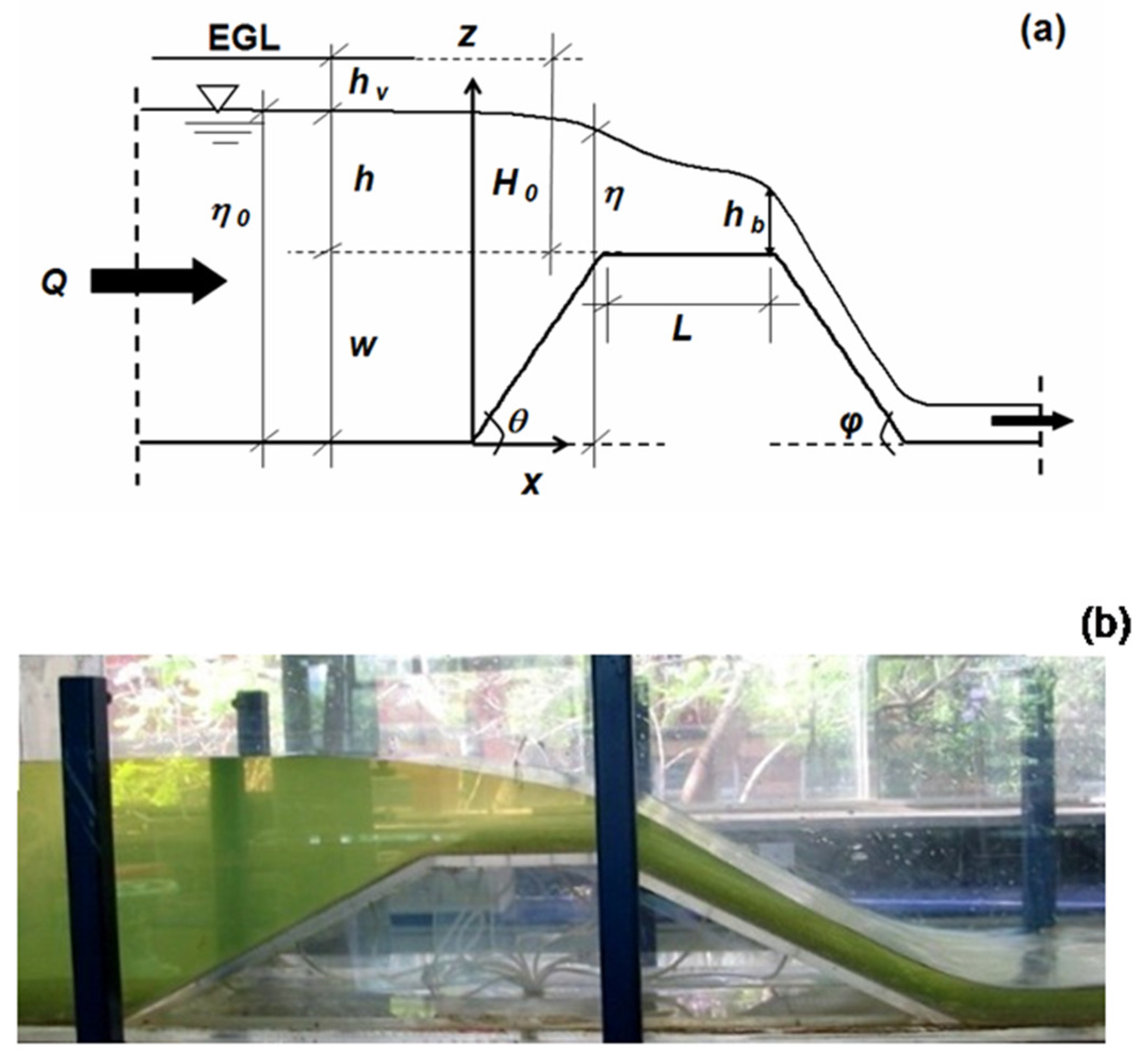

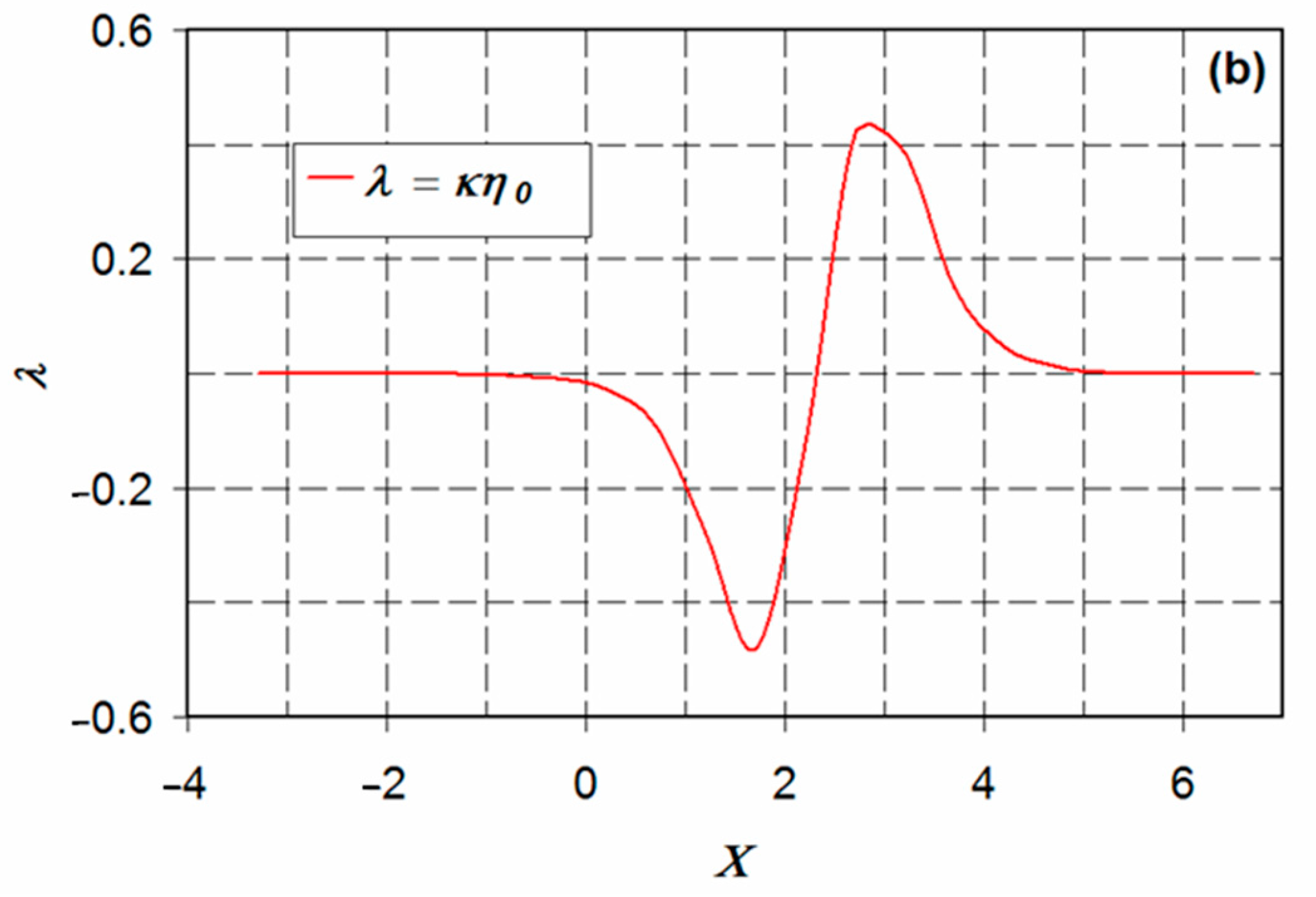

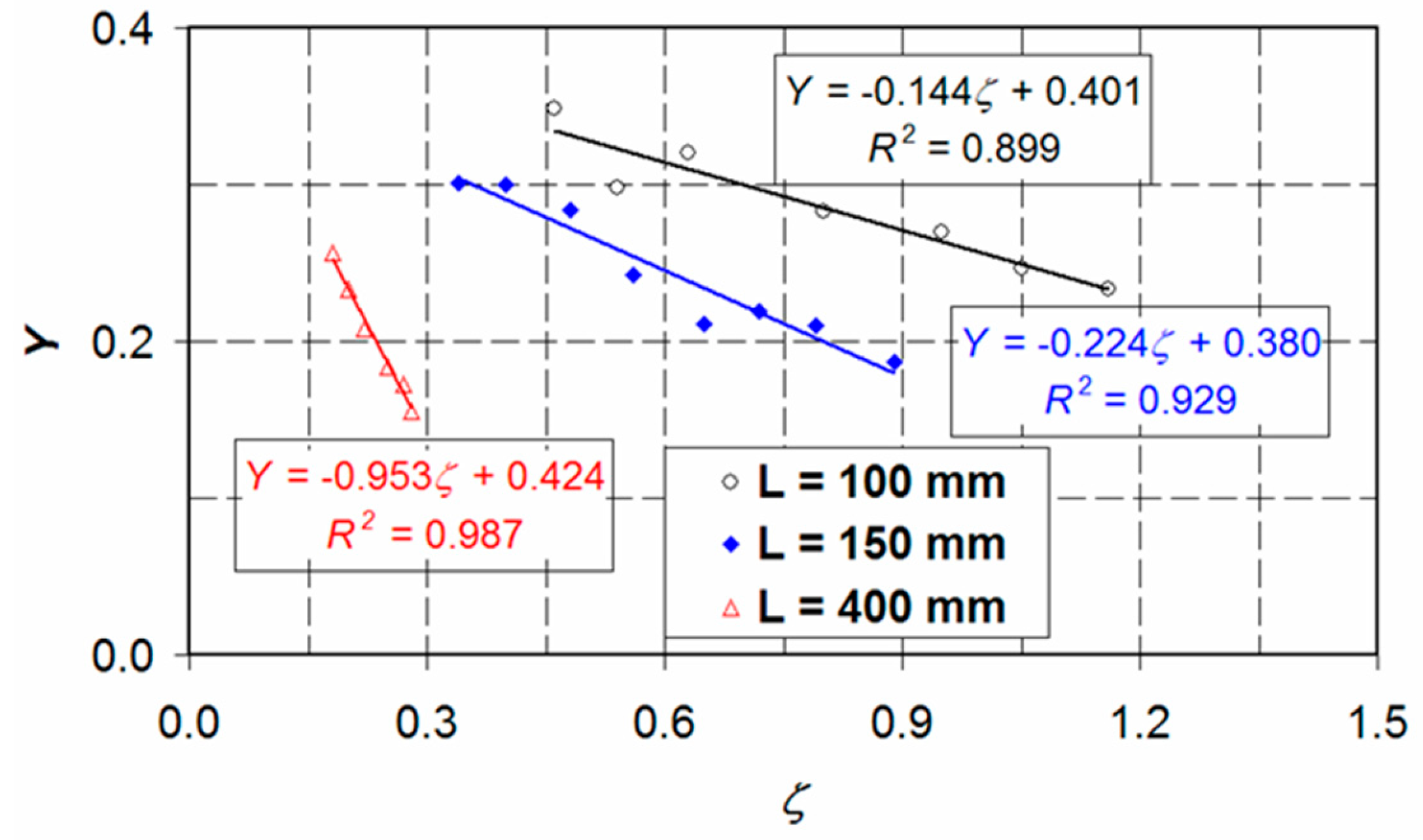

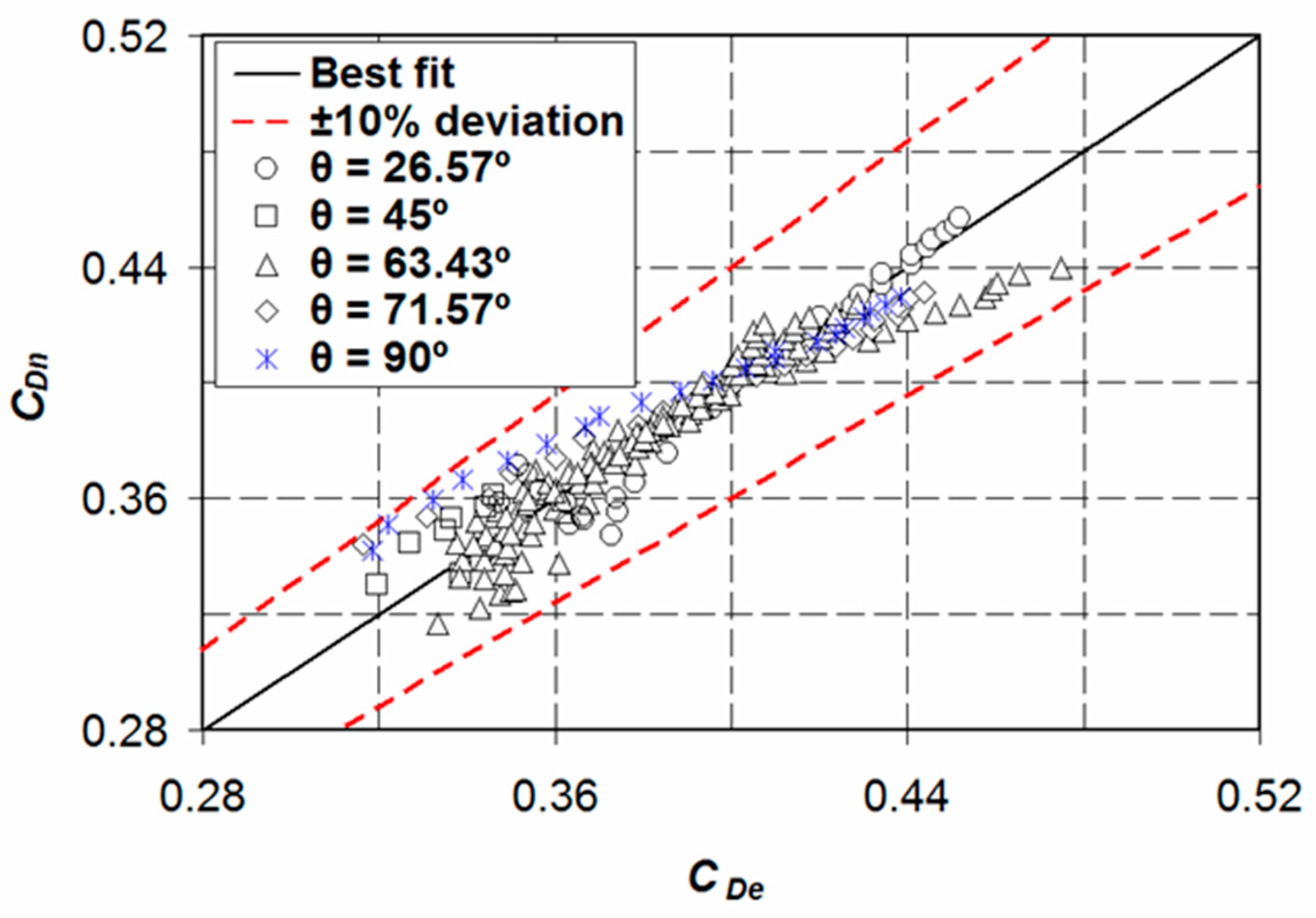
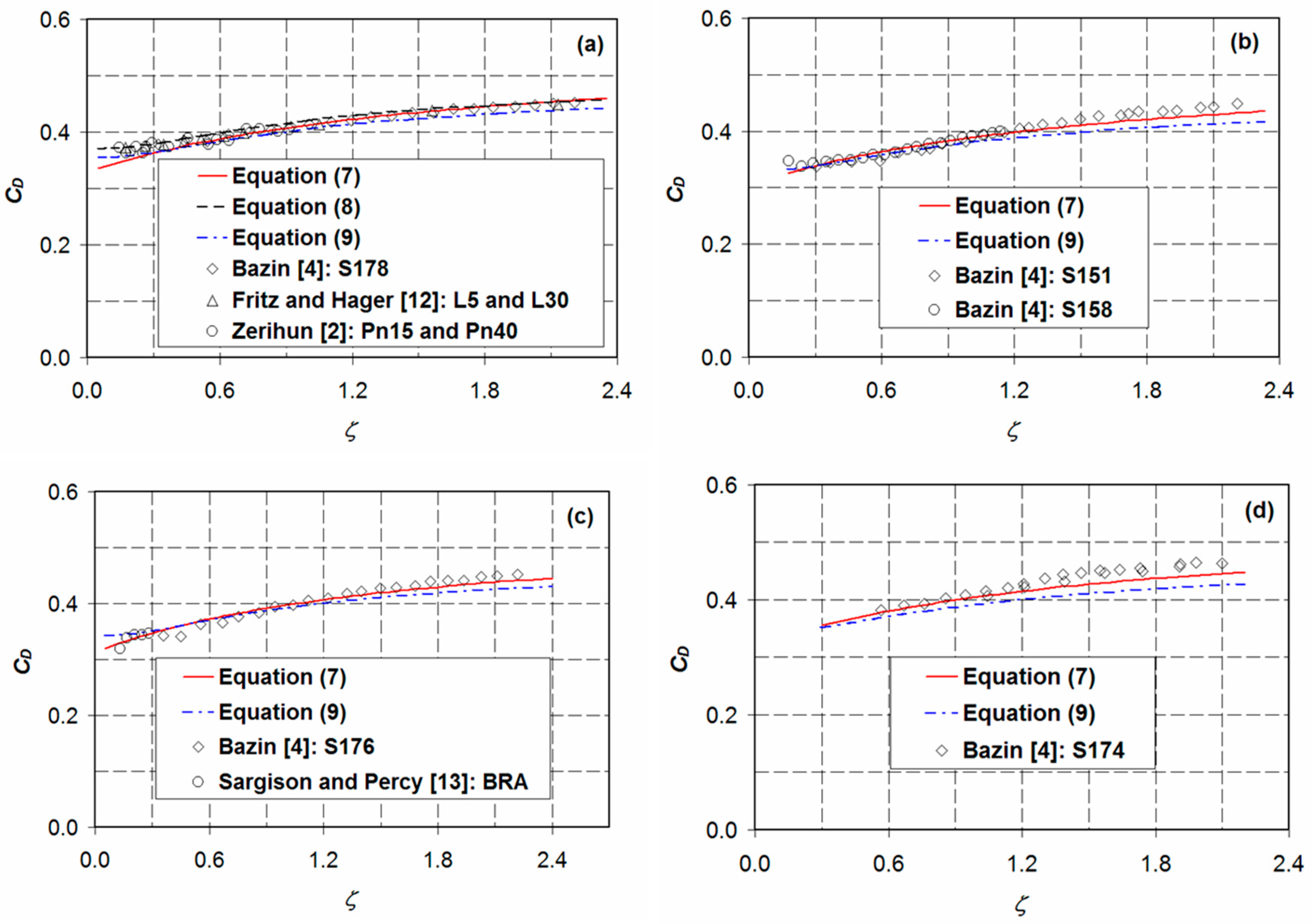

| Experiments | |||||
|---|---|---|---|---|---|
| 1. Bazin [4] Series (S) [147, 149, 150, 151, 153, 154, 156, 158–160, 171, 174, 176, 178] | 26.57°–90° | 9.46°–45° | 0.13–2.26 | 0.08–0.37 | 0.01–0.21 |
| 2. Fritz and Hager [12] Series [L5 (L = 50 mm), L30 (L = 300 mm)] | 26.57° | 26.57° | 0.17–2.13 | 0.15–0.26 | 0.03–0.15 |
| 3. Sargison and Percy [13] Series [ARB, BRA, BRV] | 26.57°–45° | 26.57°–90° | 0.13–0.30 | 0.21–0.37 | 0.04–0.12 |
| 4. Zerihun [2] Series [Pn10, Pn15, Pn40] | 26.57° | 26.57° | 0.14–0.92 | 0.23–0.41 | 0.06–0.19 |
Publisher’s Note: MDPI stays neutral with regard to jurisdictional claims in published maps and institutional affiliations. |
© 2020 by the author. Licensee MDPI, Basel, Switzerland. This article is an open access article distributed under the terms and conditions of the Creative Commons Attribution (CC BY) license (http://creativecommons.org/licenses/by/4.0/).
Share and Cite
Zerihun, Y.T. Free Flow and Discharge Characteristics of Trapezoidal-Shaped Weirs. Fluids 2020, 5, 238. https://doi.org/10.3390/fluids5040238
Zerihun YT. Free Flow and Discharge Characteristics of Trapezoidal-Shaped Weirs. Fluids. 2020; 5(4):238. https://doi.org/10.3390/fluids5040238
Chicago/Turabian StyleZerihun, Yebegaeshet T. 2020. "Free Flow and Discharge Characteristics of Trapezoidal-Shaped Weirs" Fluids 5, no. 4: 238. https://doi.org/10.3390/fluids5040238
APA StyleZerihun, Y. T. (2020). Free Flow and Discharge Characteristics of Trapezoidal-Shaped Weirs. Fluids, 5(4), 238. https://doi.org/10.3390/fluids5040238




